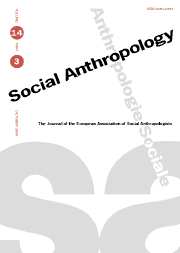Article contents
Diversity, order, unity. Different levels in folk knowledge about the living
Published online by Cambridge University Press: 01 February 1999
Abstract
In spite of their long experience in the analysis of folk knowledge on nature and of the large number of contributions devoted to the relations societies entertain with their environment, anthropologists today are hardly ever consulted at a time when environmental issues have become crucial. In particular, the way knowledge about living beings is organised along different levels is barely taken into account. While the first level is the acknowledgment of the diversity of beings and is manifested through the attribution of naming terms, the second illustrates how each society orders this diversity. The examples used here mainly belong to the vegetal domain. Last, at a third level, encompassing the whole of society, we can see that it is not so much the individuals which constitute the diversity of the living as the elements that constitute them.
- Type
- Research Article
- Information
- Copyright
- © 1999 Cambridge University Press
- 12
- Cited by


